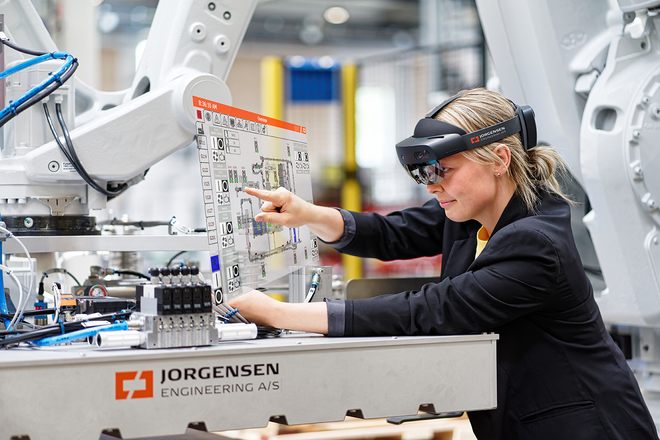The concept is based on the system obtaining a digital copy, and in an ideal scenario this will be identical to the physical system in terms of functionality. Through the digital twin, Jorgensen can show its customers what the project will look like in reality as well as test the programming before the machines are physically in place.
“The aim is to create a flexible future production operation by identifying deficiencies and opportunities for improvement right from the virtual stage, in order to avoid mistakes in reality,” points out Kenneth. This is reducing Jorgensen’s production time, as the programmers can work continually on streamlining the system based on the results of the tests being carried out.
CREATING VALUE IN THE COLLABORATION
New opportunities are also being created in the virtual world to train the customer in the use of the system, so that they possess this knowledge when the system is to be implemented in the production process. “The ability to simulate and to show the customer what we mean virtually, rather than sending heavy documents that the customer needs to read through, increases the level of understanding and means that the collaboration with the customer generates more value,” says Kenneth.
“Following delivery, we can continue to test new products and optimise processes without the customer needing to halt production in the physical facility during this time. The digital twin also simplifies servicing and support, as they can be performed remotely. Quite simply, allowing preparations to take place in the digital world before the system delivery is implemented is producing many benefits,” continues Kenneth.
The data that is gathered in and analysed helps to visualise the options for improving efficiency in the production facility. “The analysed data provides us with a picture of the actual situation, as well as an insight into how we can make changes in order to improve. The time that we previously spent on resolving any problems on an ad hoc basis can instead be devoted to optimising the facility so that we can avoid the problems in the first place,” concludes Kenneth.

